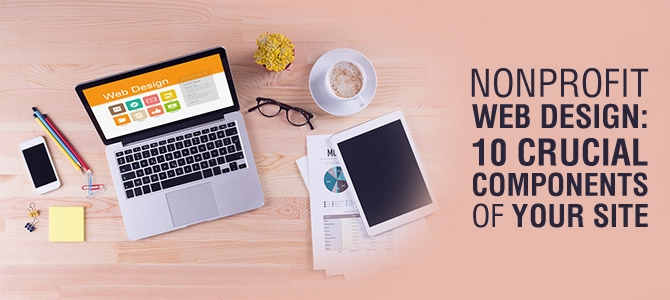This is part two of a two-part series on nonprofit Web design.
In part one we covered content optimization and tools specific to nonprofit websites. Part two focuses on five general User Experience principles:

Another embedded tool that should feature prominently in one or more places on your site is an email subscription box.
Visitors interested in your organization’s work and who might want to volunteer or donate would be happy to receive updates on projects and events. Email campaigns are the perfect way to spread the word and can serve any number of important functions for your nonprofit, like:
- Thanking donors for their support
- Sharing stories of your donors’ support in action
- Requesting survey information from supporters
- Providing newsletter updates and volunteer opportunities
Keeping donors engaged with ongoing email campaigns greatly benefits your organization and can provide you with useful data to guide your marketing decisions.
Most importantly, give visitors the opportunity at several locations on your website to subscribe to email updates if they wish.

As supporters choose to donate to you online, you can provide them with a sense of security and familiarity with your organization through cohesive visual branding.
Establishing a distinct and appealing visual identity is central to digital marketing and maintaining strong relationships with the public.
Your website is perhaps the best place to showcase your unified brand identity. You can convey a professional and unique image of your organization and attract potential donors by visually uniting all of your website’s elements, including:
- Page headers
- Main menus and navigation bars
- Graphic elements and logos
- Buttons and embedded links
A unified visual branding of your nonprofit will complement the positive user experience that you build across your website as a whole while allowing your donors and volunteers to have and remember a clear positive image of your organization.

Just as poor Web navigation features create an unwelcoming experience, poorly-designed mobile versions of websites can be equally frustrating for visitors looking for information.
In terms of visual layout, mobile optimization might now be the most important element for any Web designer to consider. More and more potential donors will not only search for your organization on their mobile devices, they’ll want to engage with you there too.
Most site builders already optimize pages for mobile viewing, but it’s still crucial to check that your site generally follows a simple vertical layout.
A good mobile version of your site should distill your visual identity into an even bolder and more simplified form. Be sure to retain an intuitive drop-down navigation system and simple embedded features like email subscriptions, donation buttons, and matching gift search features.
If you’re in search of a site builder that prioritizes mobile optimization and other elements that are crucial to user experience, check out a list of the top site builders for nonprofits from DNL OmniMedia.






Social media has quickly changed the ways in which we interact not only with each other but also with the organizations and business around us. It’s increasingly important that donors (and potential donors) be able to connect with you and contact you across multiple platforms.
Provide clear links or icons to your organization’s social media pages on your top website banner, in the footer of each page or on a dedicated contact information page.
Think of the various ways that supporters might wish to engage with your nonprofit through social media. Maybe they’d want to share an event page for your upcoming fundraiser. Or, maybe they’d like to tell their friends that they just donated to a nonprofit they believe in.
Unify your digital audiences by giving them networked access to your online presence.
A well-designed nonprofit website can effectively communicate anything about the organization that a potential donor might want to know in a concise and aesthetically-pleasing way, leaving a powerful impression and increasing the likelihood of a donation.